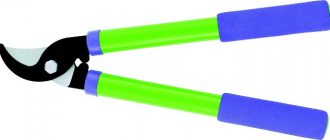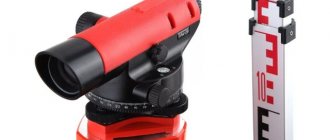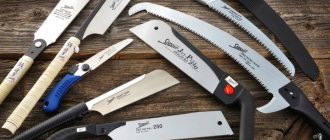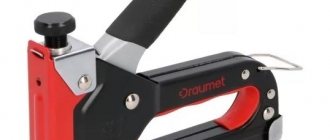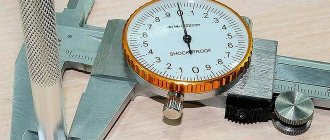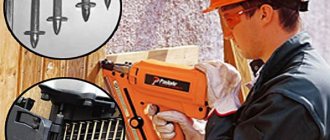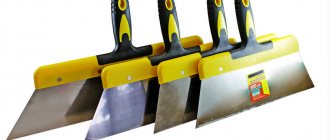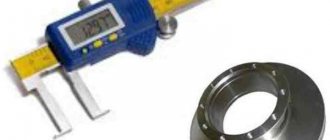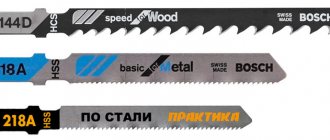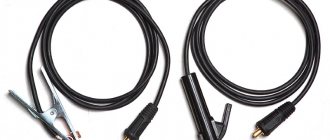Construction sealants and adhesives from different manufacturers and compositions also differ in properties, however, they are united by the inconvenience of application without the use of a special tool, which has received the most common name - a sealant gun.
Its use improves the quality and speed of application of the adhesive material supplied in tubes.
There are completely different types of sealant guns on the construction tool market, each of which has a different design and is used in certain working conditions.
Purpose and operating principle of a sealant gun
Many construction compounds, for example, the same adhesive for ceramic tiles, are produced in plastic or cardboard cases made in the form of tubes.
For simple and uniform application of such compounds on the surface to be treated, sealant guns are used, available on the market in several design options.
The tube itself is essentially a large syringe with a piston, but without a rod.
The last part is precisely an integral part of a special tool.
This instrument is called a pistol because of its similar shape to the type of weapon of the same name.
There is also something like a trigger, when pressed, the rod presses on the piston of the tube, thereby squeezing out the applied composition from the opposite side.
With a sealant gun you can apply acrylic, silicone, liquid nails, chemical anchor and many other compounds, packaged in suitable tubes, or not packaged at all.
York
Professional body mechanical sealant gun. Suitable for 600 ml tubes and high viscosity sealants.
Peculiarities:
- feed gear ratio - 26:1;
- durable and lightweight aluminum body;
- high wear resistance: the mechanism is equipped with a patented coupling, the working parts are galvanized;
- plastic nozzles included;
- the design includes a plunger, which optimizes sealant consumption;
- all structural elements can be replaced;
- prepared for use immediately after purchase.
Device and characteristics
Structurally, the sealant gun consists of the following parts:
- The body (frame) into which the tube is inserted.
- Rod with piston - depending on the type of gun, it can be hexagonal, smooth or serrated. Its purpose is to push the mass from the tube to its spout.
- A handle with a trigger, when pressed, the sealant is pressed out in portions with a piston.
- A fuse to keep the piston from spontaneous reverse motion and fix it at a given level.
Also included with the tool are various attachments that allow you to set the characteristics of the seam being applied.
So there are nozzles that are convenient to quickly apply and level the material at the same time, for example, on joints in the bathroom.
Material
In the manufacture of sealant guns, depending on their type, durable plastic that is resistant to mechanical stress or steel coated with anti-corrosion paint is most often used.
They can also use tool steel, which contains chromium and vanadium or aluminum.
The latter is used in the production of only cabinet models, regardless of the method of actuating their mechanism.
Dimensions and weight
The vast majority of sealant guns are made to fit the corresponding sizes of standard tubes with a capacity of 310 and 600 ml.
The length of the simplest tool is approximately 220 mm and 440 mm, respectively.
In principle, the dimensions of the gun do not matter much and are marked according to the standards of the cartridges for which they are intended to work.
The instrument weighs on average from 250 g.
Additional functions
Modern tools can be equipped with various additional functions to make work easier, including:
- Illumination of the sealant application area.
- Trigger lock for easy long-term operation.
- Adjustable speed of sealant application, which improves the accuracy of work
- Leakage protection.
Among other things, for the sealant gun you can additionally purchase all kinds of backlit attachments, a cleaning needle, and a punch that allows you to remove the hardened mixture.
The nozzles themselves, by the way, can have very different shapes, allowing you to apply sealant to hard-to-reach places.
Midiflow
The professional half-body mechanical gun Midiflow is used for 600 ml tubes and bulk sealants.
Peculiarities:
- price category - economy class;
- housing made of high-quality plastic;
- light weight;
- feed gear ratio - 10:1;
- working parts are galvanized, which ensures corrosion resistance;
- ergonomic shape;
- pistol elements are replaceable;
- supplied complete with nozzle.
Types of sealant guns and their prices
According to the design of the body, the sealant gun can be:
Skeletal
Used for one-time or rare jobs.
The body is made of 1.5 mm steel, and the hexagonal rod has a cross section of 6 mm.
The presence of stiffening ribs ensures smooth movement of the piston, while reliably holding the tube with sealant.
Steel and plastic are used in production.
Structurally, such a tool looks like two frames connected by a ring; the rod can be hexagonal, smooth or serrated.
The average price is 200 – 400 rubles, there are models for 120 rubles.
Reinforced
With a design similar to the previous version, however, more durable materials are used in production.
We are talking about thicker elements and a rod with a cross-section of at least 8 mm.
Cost from 200 rubles.
Half-body (half-open)
The cheapest option, as it is not designed for long-term use.
The production uses steel with a thickness of 1 mm.
The pistol received its name “half-body” because of its semi-cylinder shape.
A design that does not have any stiffening ribs leads to distortion of the stroke of the rod, which makes it difficult to move.
The cost of such a pistol ranges from only 120 - 150 rubles.
Steel is used in production, the body is a cavity into which the tube is inserted, the rod can be toothed, smooth or hexagonal.
Case cylindrical
The tool is the most versatile, as it allows you to apply sealant not only in tubes, but also in sausage-type packaging or without any container at all.
The closed cylinder of the body here can act as a holder for the tube, or directly as the tube itself, into which the sealant is simply filled.
In manufacturing, plastic or aluminum is most often used, the rod is always smooth.
Such models are called a closed-type sealant gun.
Price – at least 500 rubles.
According to the type of supply of sealing agents, the tool is:
Mechanical
The simplest tool that is practically not used in professional activities.
A tube of sealant is inserted into such a gun, and extrusion occurs through periodically repeated pulls on the trigger.
Rechargeable
Suitable for performing work of a wide variety of sizes, including intensive use on construction sites.
It often looks like a hybrid of a cordless screwdriver and an ordinary closed or semi-open pistol.
The good thing about a cordless tube gun is that it allows you to smoothly regulate the supply speed of the sealing agent, which ensures high final quality.
For this reason, the tool is often called a cordless dispenser.
Such models will cost approximately 4–5 thousand rubles for the cheapest options, and 20–30 thousand for professional equipment.
Avon
Professional cased, mechanical pistol. Suitable for 600 ml tubes and bulk sealants.
Peculiarities:
- best price/quality ratio;
- transmission ratio of the feed mechanism - 12:1;
- high wear resistance: the mechanism is equipped with a patented coupling, the plunger rod, as well as reinforced connecting rod journals have been hardened;
- plastic nozzles included;
- the design includes a plunger, the material is consumed without a trace;
- Avon pistol is fully prepared for use.
Pneumatic
Used to perform large volumes of work, it applies sealant quickly, conveniently and in an even layer.
Such a tool is connected to a pneumatic line suitable for its characteristics, for example, an air compressor, and when using a special muffler, it is almost completely silent.
Another advantage of such a gun for silicone is its low weight, which in a professional environment is valued no less than performance.
The cost is approximately 3.5 thousand rubles.
The sealant syringe gun can have a fixed or rotating body (excluding options with a closed body).
This design allows the part holding the tube to rotate relative to the handle, which increases the convenience of applying sealant when working at different angles.
In addition, there are so-called models with a counterweight, where the handle is shifted closer to the center of the entire structure, this makes it possible to evenly distribute the load on the hand.
Which sealant gun should I choose?
To perform periodic simple tasks, such as processing joints in the bathroom or when restoring, for example, furniture, an ordinary household gun with a mechanical supply of sealing material is suitable.
When choosing such a model, you should pay attention to the possibility of its working with small packages of sealant.
It is desirable to support the 310 mm tube, as it is the most common and in demand.
To ensure that an inexpensive pistol purchased for the home does not break down after several uses, it is better to look towards reinforced structures with a steel thickness of at least 2 mm.
It is important to remember that you will not be able to make a neat seam without using a gun, so you will have to buy this tool in any case.
If you need to do some one-time work, you can get by with the cheapest semi-hulled “Chinese”, which is enough for a maximum of 3 refills.
The choice of a pistol for professional activities is based primarily on the following criteria:
- Convenience of transferring the instrument to a certain operating mode, for example, from tubes to bags.
- Duration of service life, that is, reliability.
- Weight, which plays an important role during intensive work.
- Pressure pressure.
- Warranty service.
Of course, professionals try to buy mostly battery-powered models, since they have high power and do not require physical effort to use.
Such options are capable of operating on a single charge for an average of 3 hours, and weigh about 2–3 kg, depending on the model.
If you plan to work with bulk sealant, attention should be paid to pneumatic self-priming guns.
Recommendations for choosing a quality pistol
Gun for two-component sealant
Expensive battery-powered, pneumatic and electric options are used on large objects. For home repairs, restoration of furniture or surfaces, purchase a mechanical model.
Tool selection rules:
- for home use, choose a case that supports the installation of small containers of 280, 310 ml, ideally taking into account the installation of soft packaging;
- inexpensive models are used for one-time work , and a home craftsman should have a reinforced version in his arsenal;
- if the sealant is two-component , without packaging, you need a self-priming prototype.
Pay attention to the weight and ease of placement in the hand.
What you need to know about caulk guns?
As already mentioned, depending on the type of gun, it can be used to apply only packaged or, additionally, unpackaged sealing agents.
The difference between these two concepts lies in the container:
- Packaged sealant is supplied in a hard plastic or foil (sausage-type) tube.
- Bulk sealant is most often sold in buckets, and therefore to apply it with the appropriate gun you will have to additionally buy special plungers and a valve cover.
Attention!
After applying the sealant, and immediately, it is important to clean all parts of the gun from its remains, since otherwise the mass will harden and in some situations it will simply not be possible to get rid of it using improvised means.
